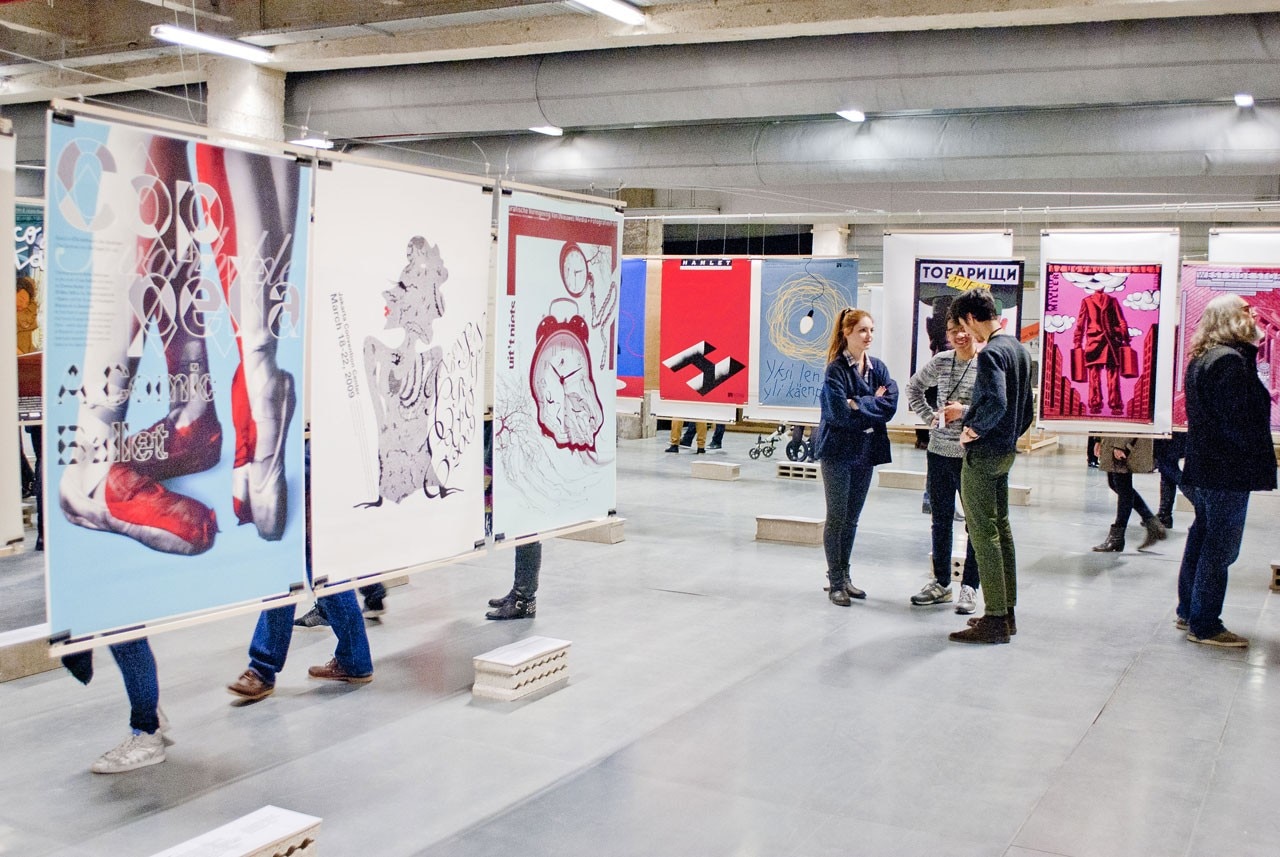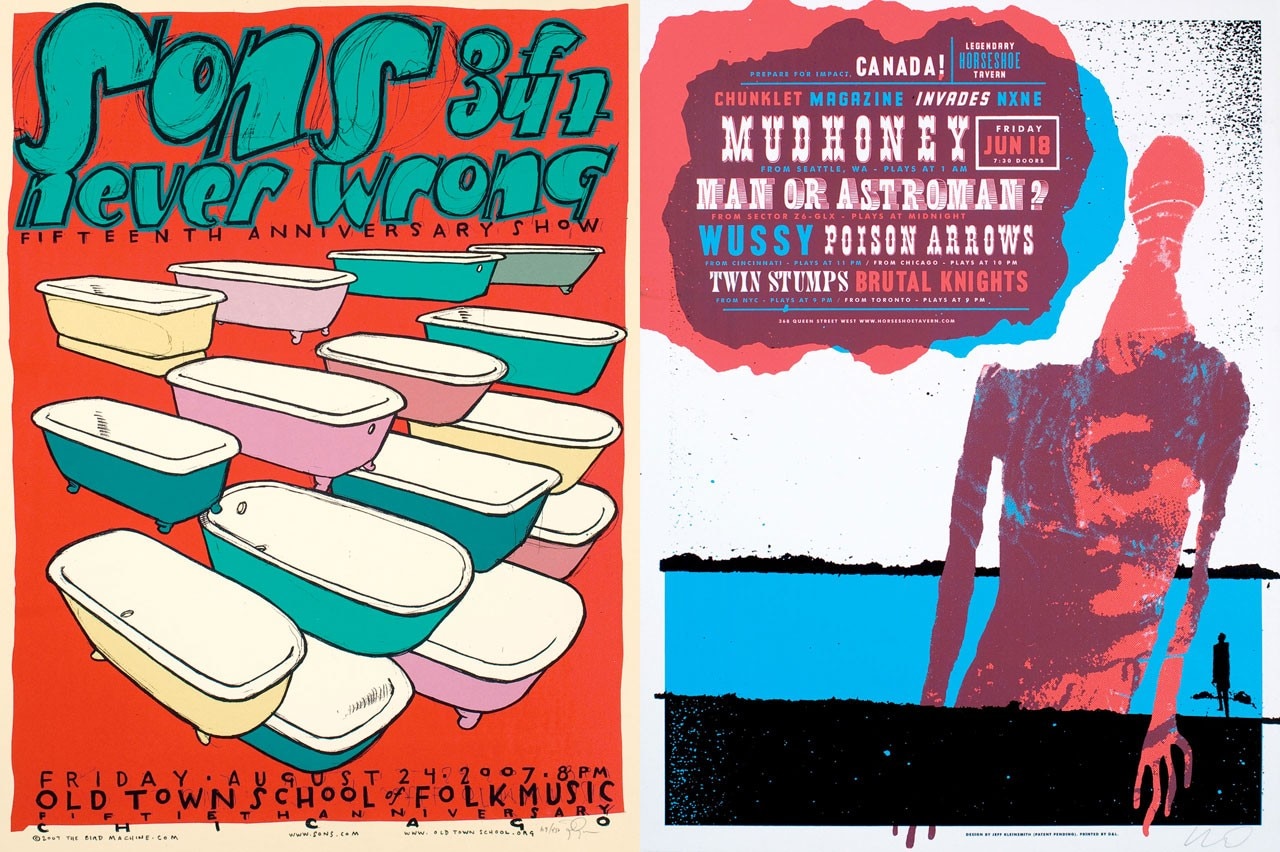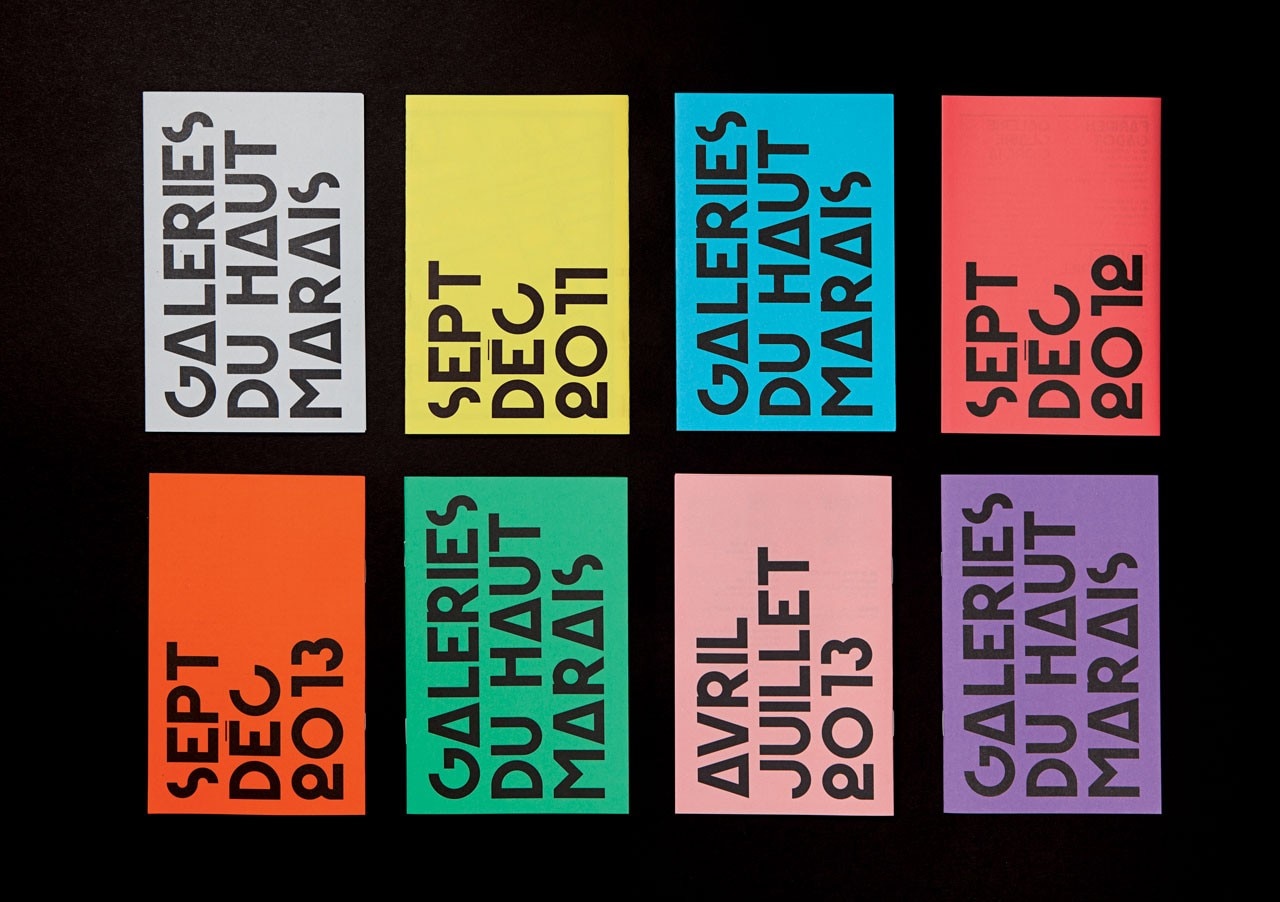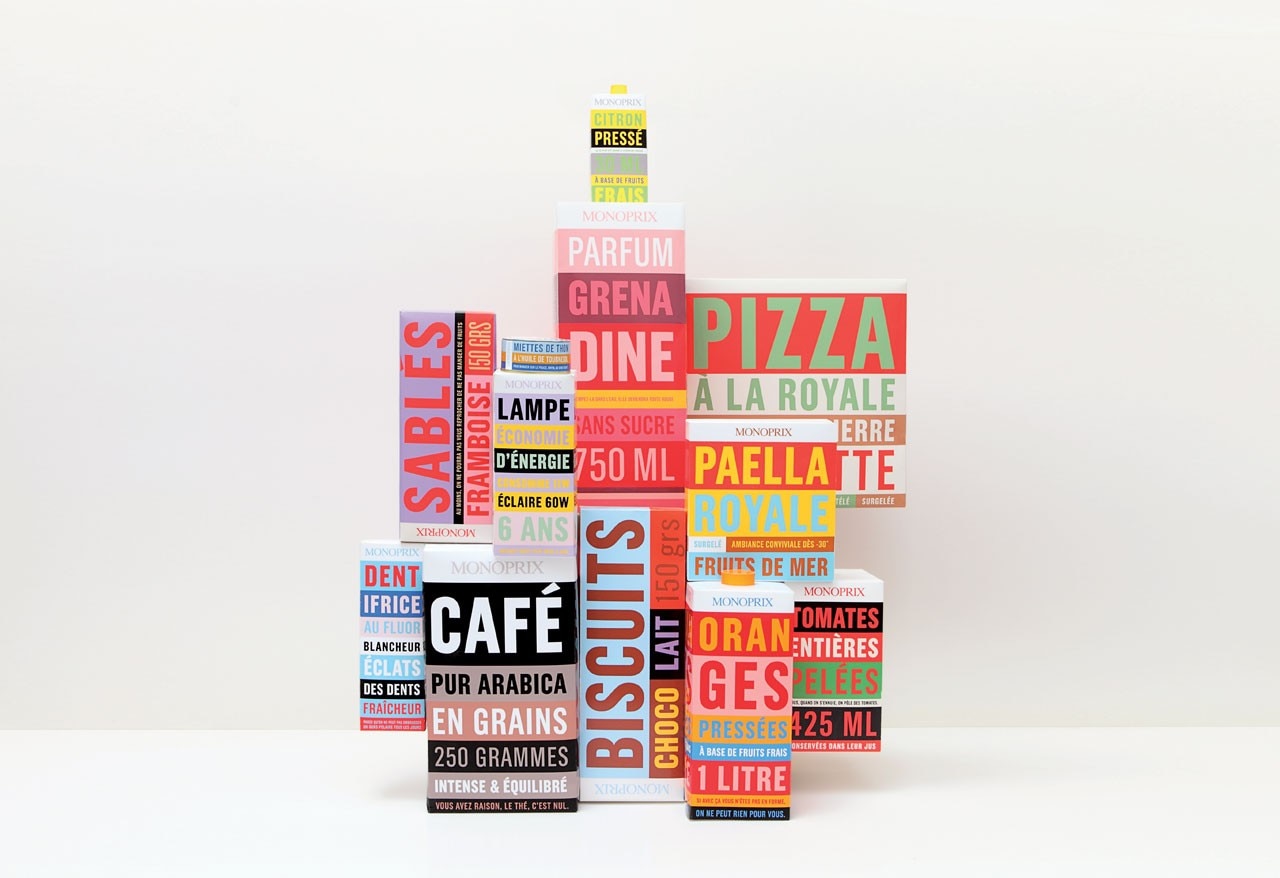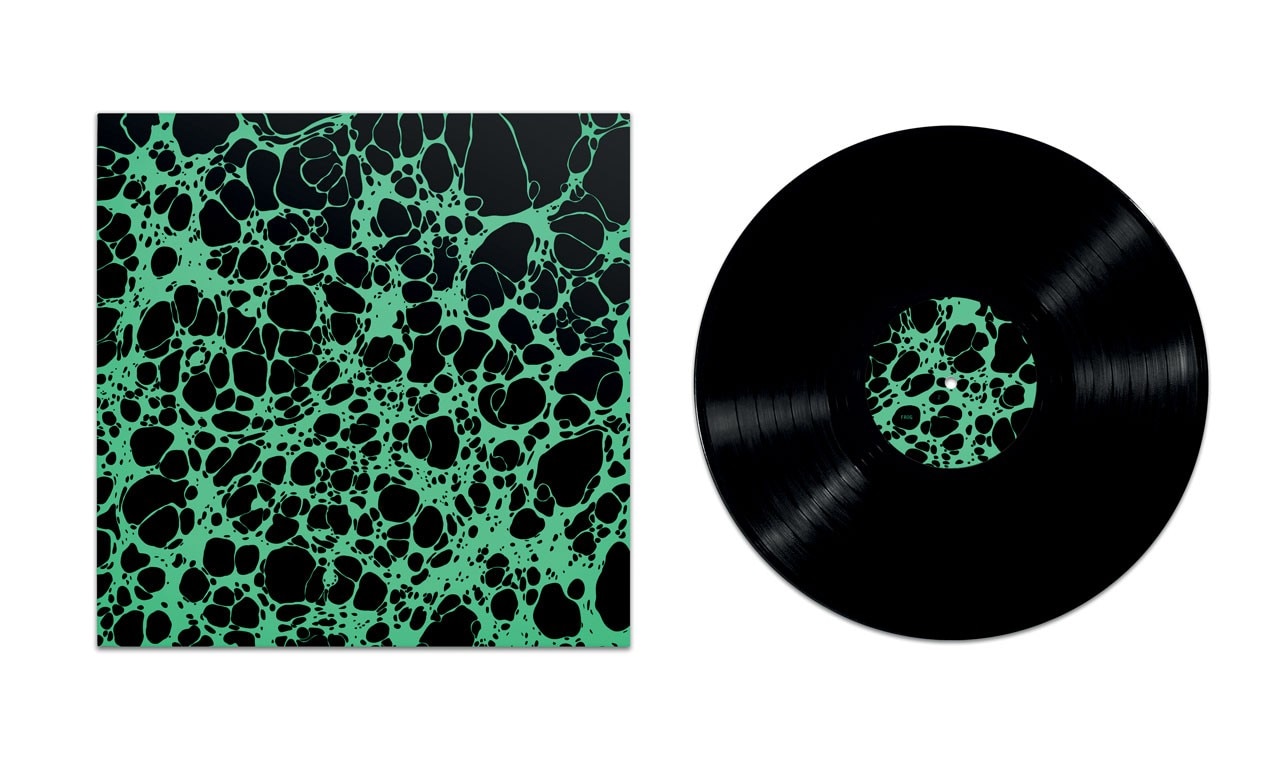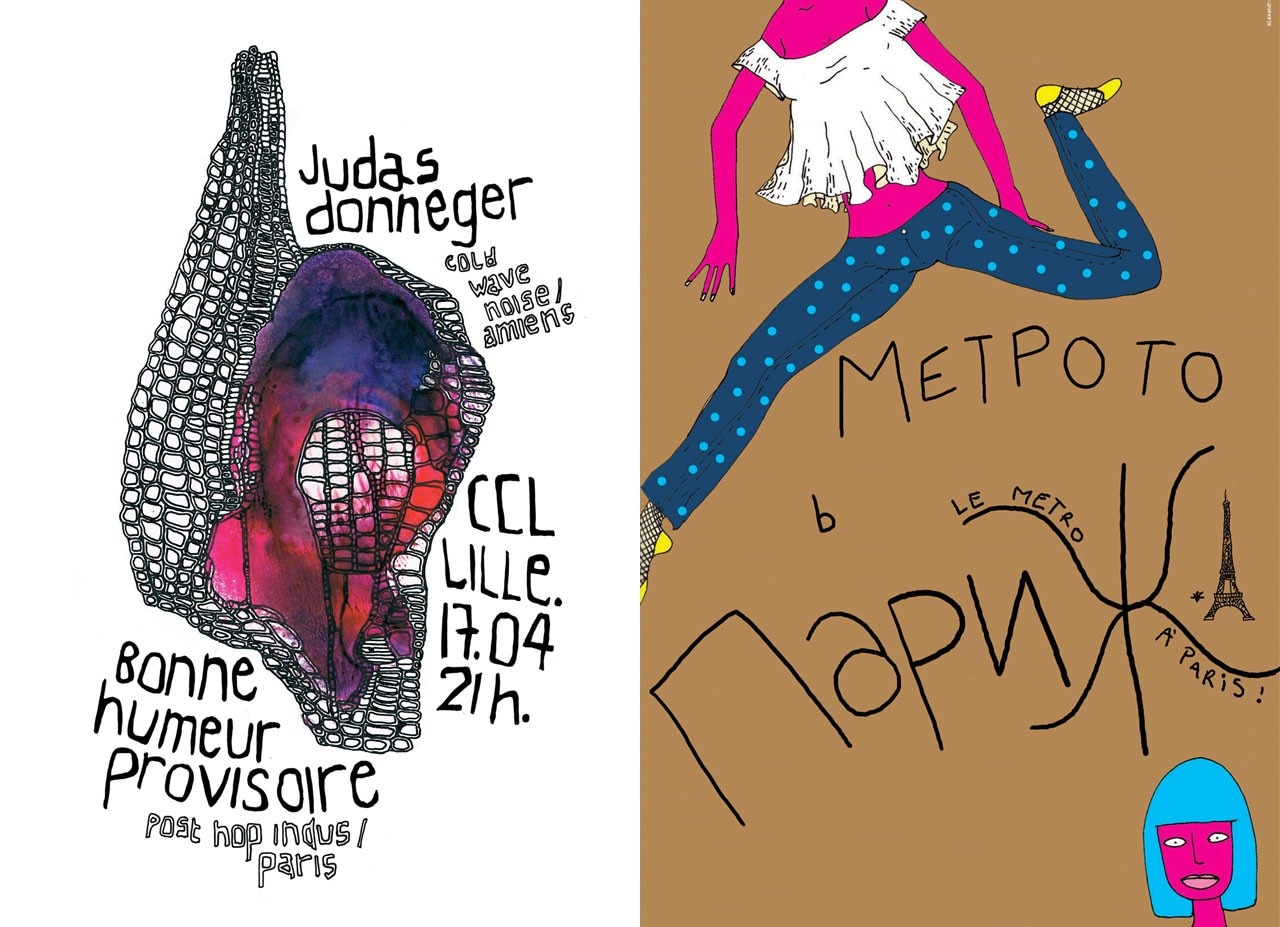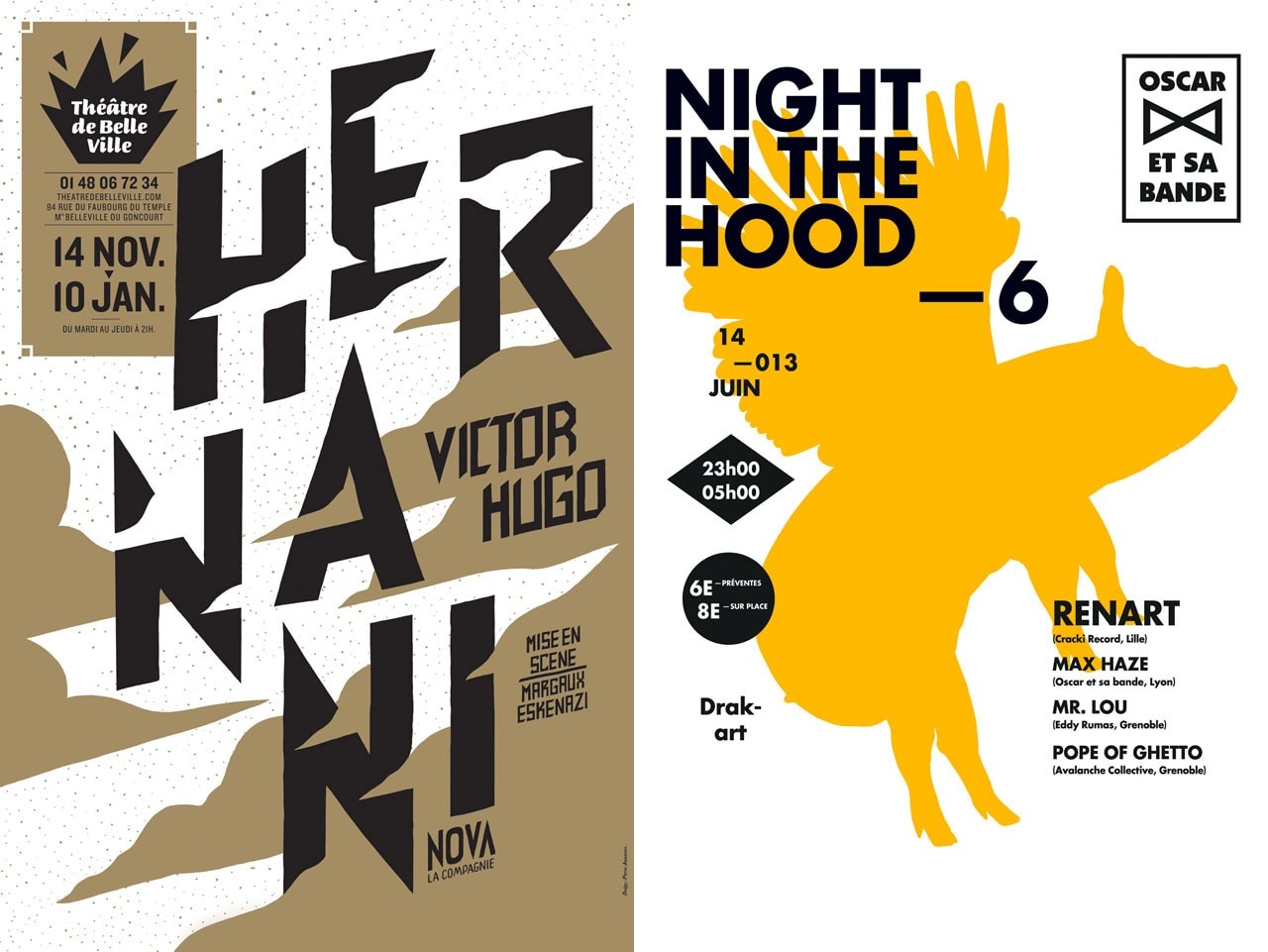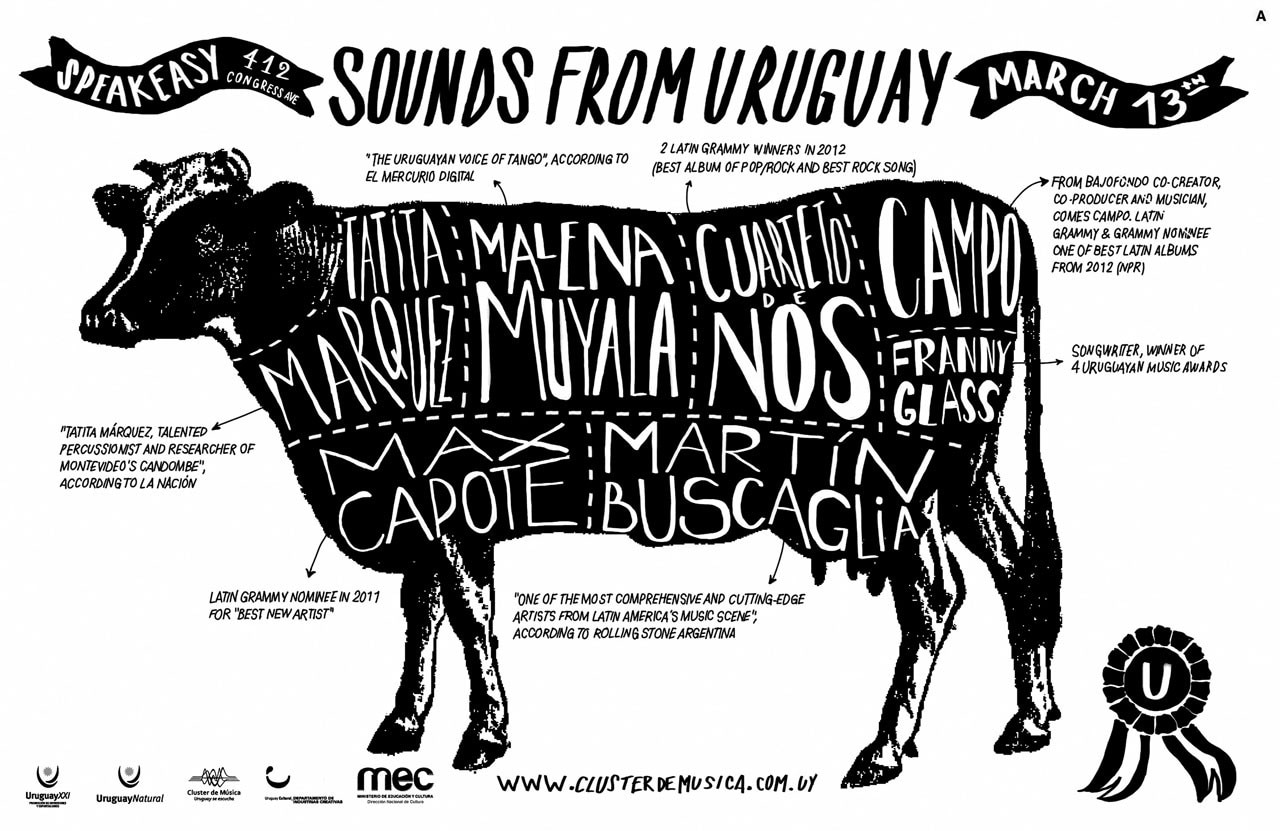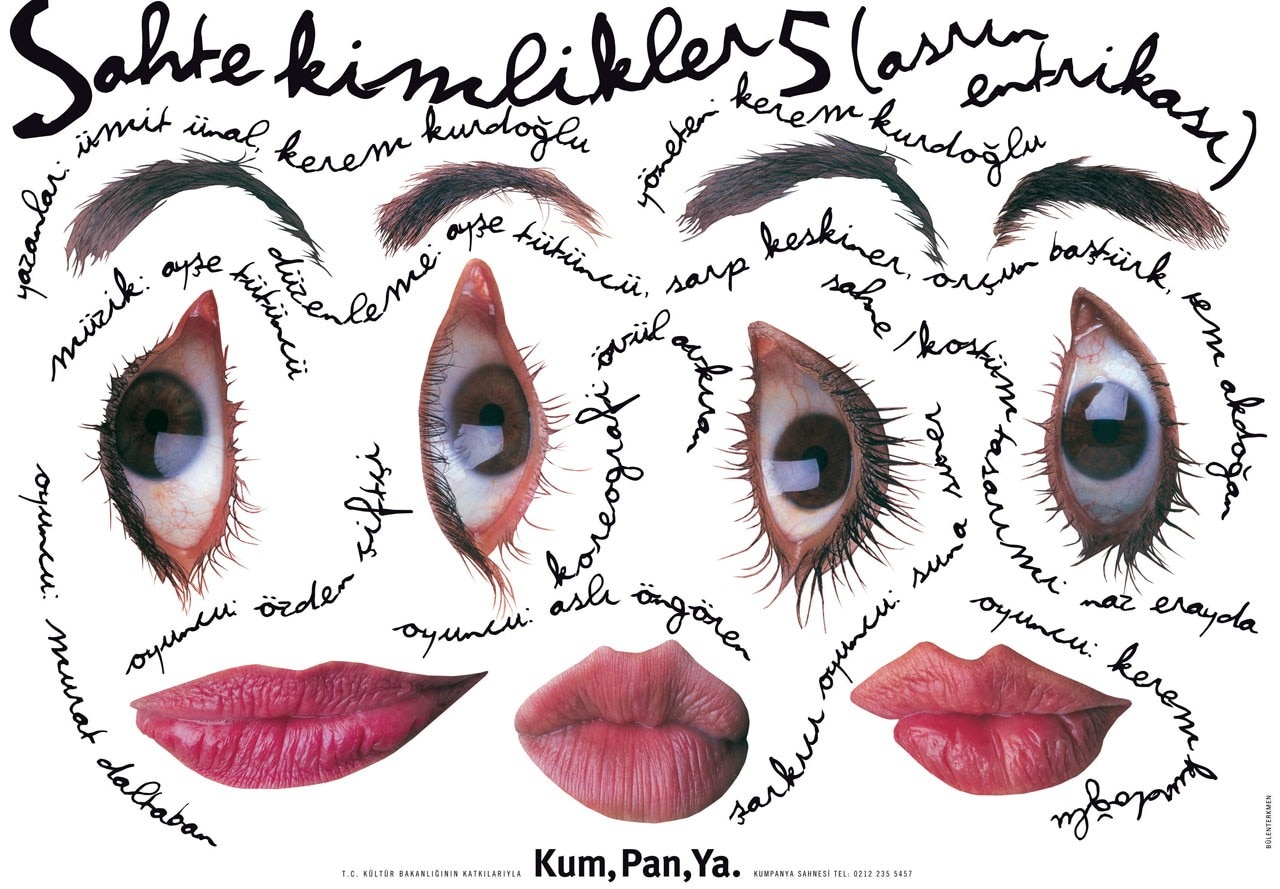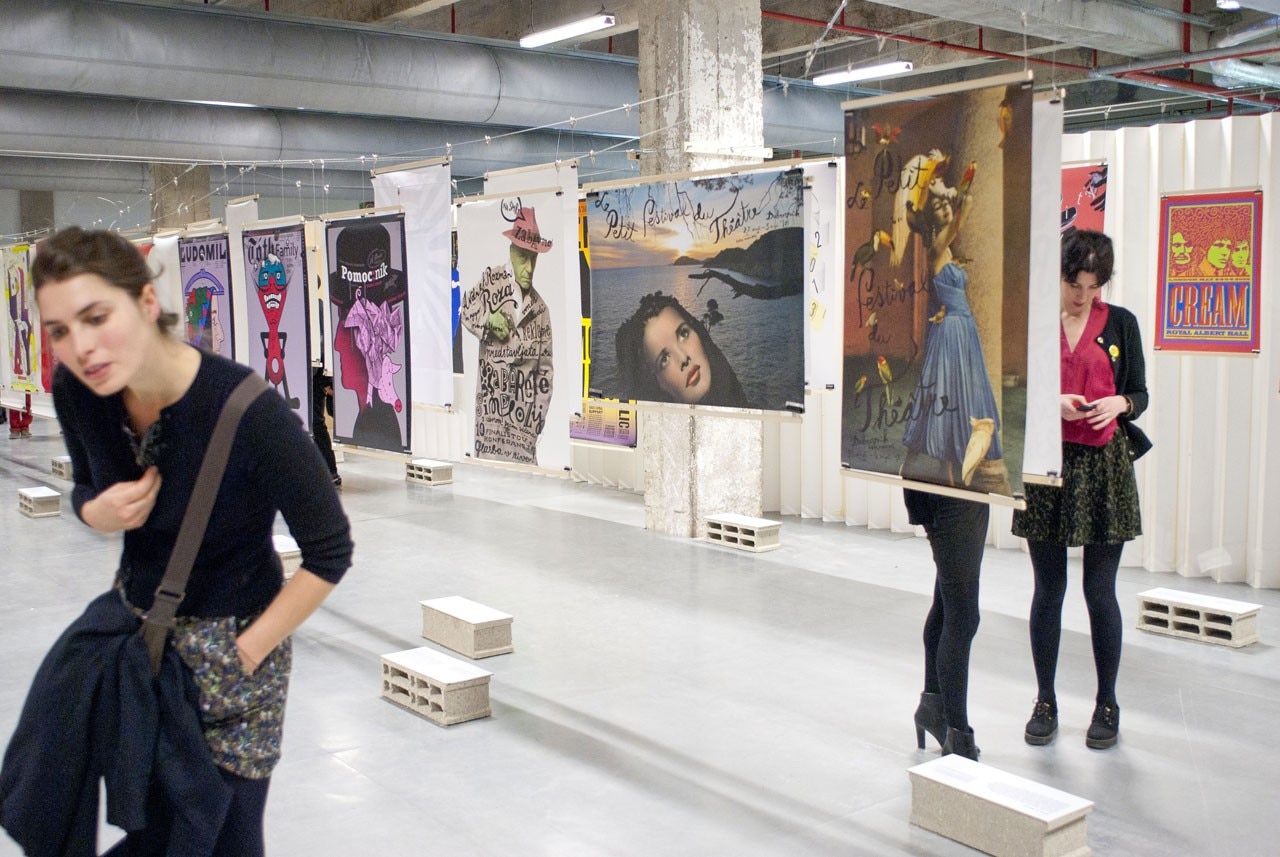
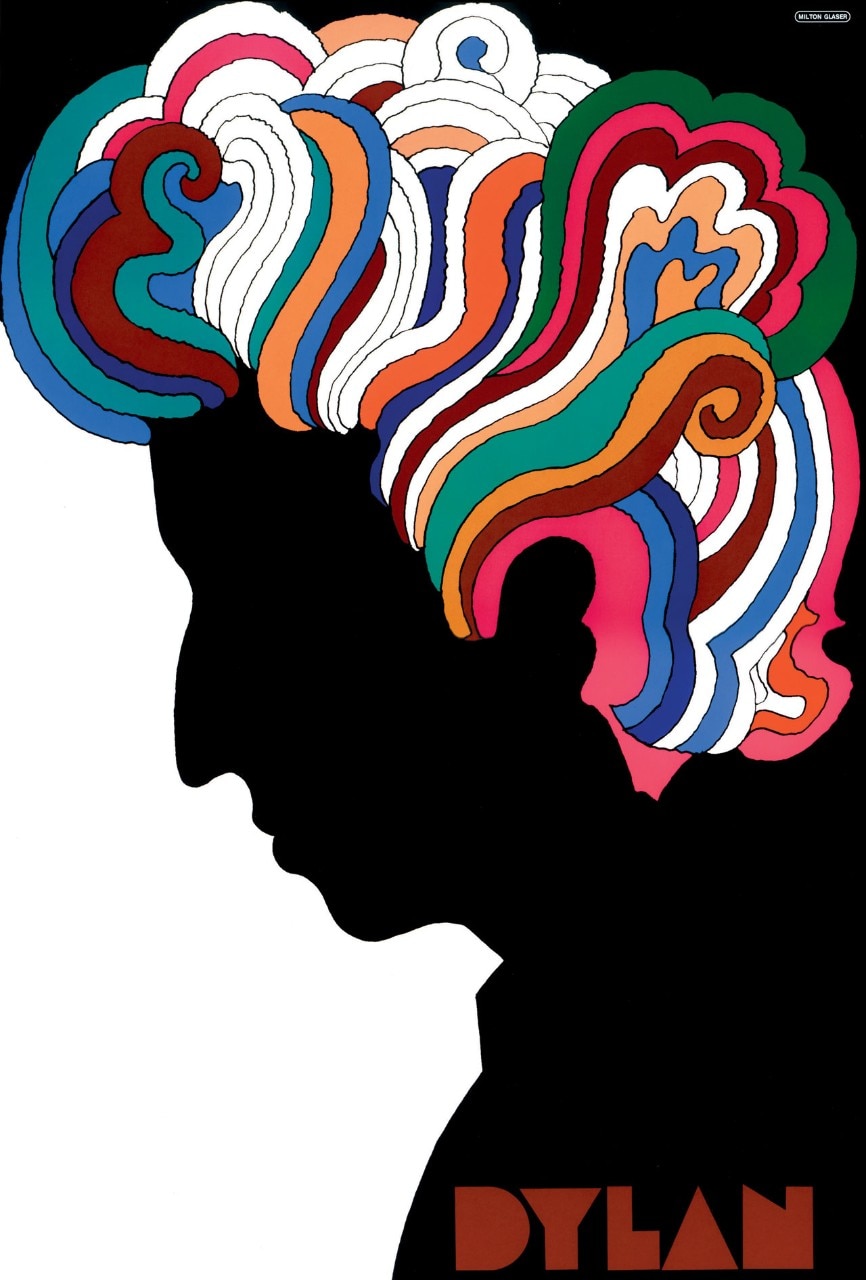
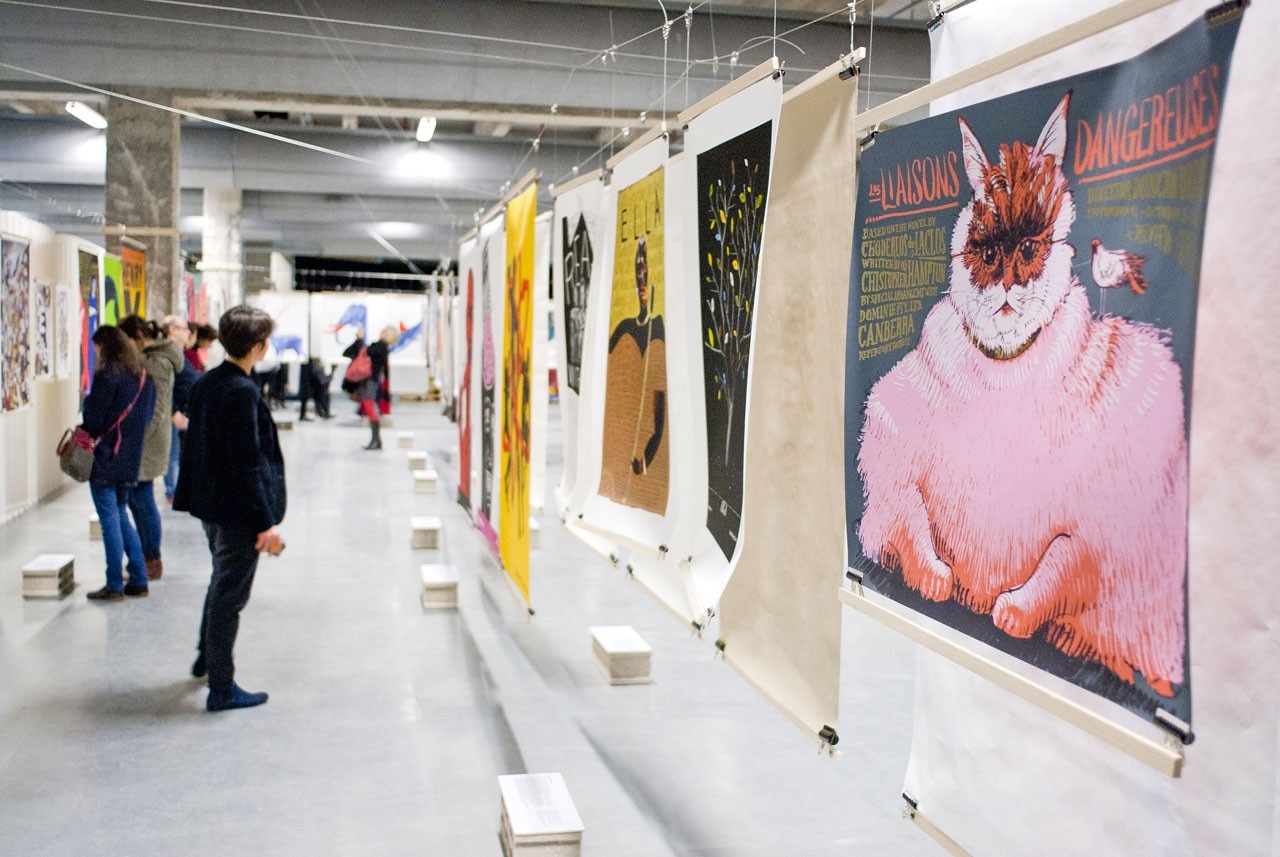
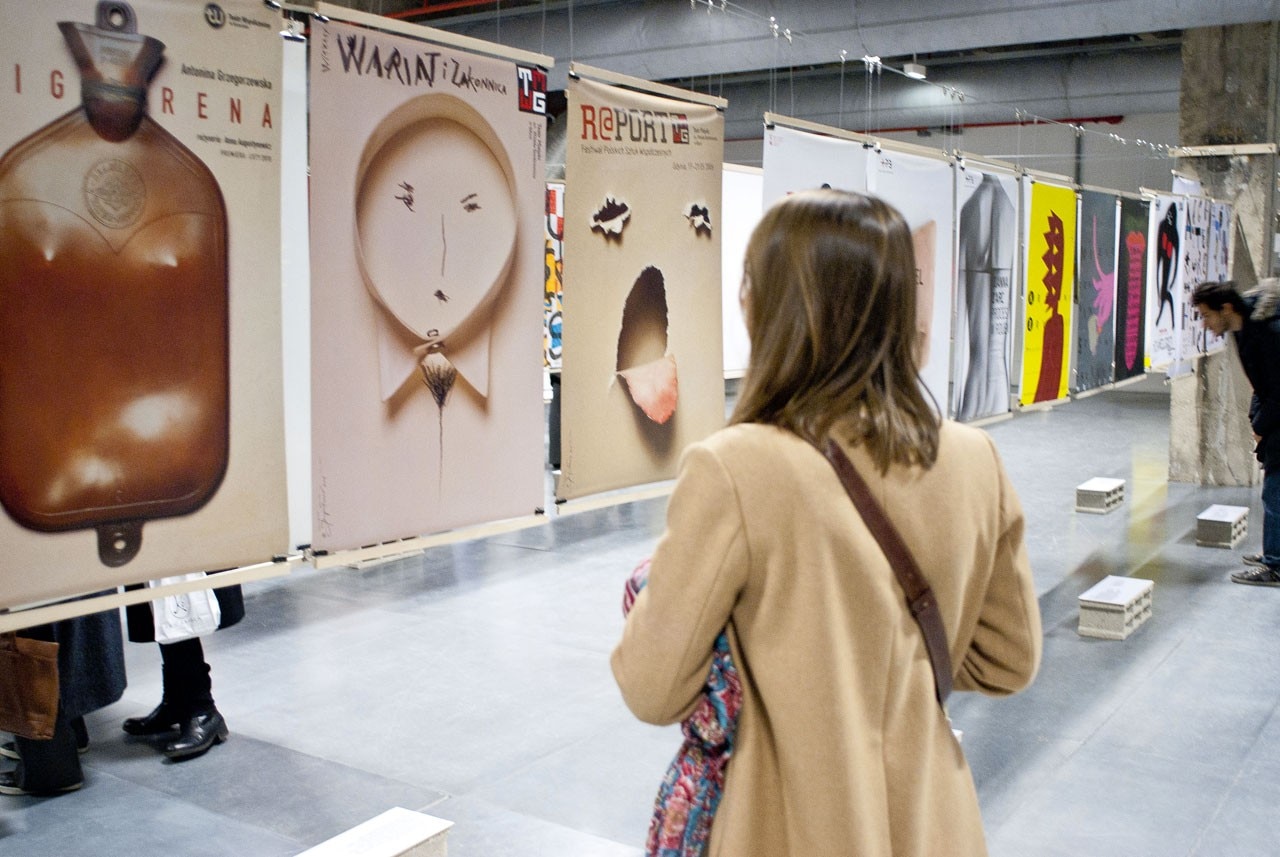
The most substantial section “Paris Invite le Monde” features more than 100 artists worldwide who were each asked to present three works of their own choice. Visitors encounter a graphic distillation of the visionary spirit of countries around the planet, in a timeframe that starts in the 1960s and continues to the present day, a fantastic landscape to be consumed all in one go and in ecstasy.
Side by side are works by graphic artists such as Alejandro Magallanes, Idania del Rio, Jianping He, Milton Glaser, Keizo Matsui, Leonardo Sonnoli, David Rager and Sandy Karman. There are also Minimalist posters that are orgies of colour. The decision to place countries in alphabetical order rather than geographical clusters facilitates the creation of a personal route on which a political poster on the end of Communism in Poland may sit beside Dutch nudism and an explosion of Mexican shamanic energy be flanked by the measured sophistication of Italian design and quiet Japanese elegance.
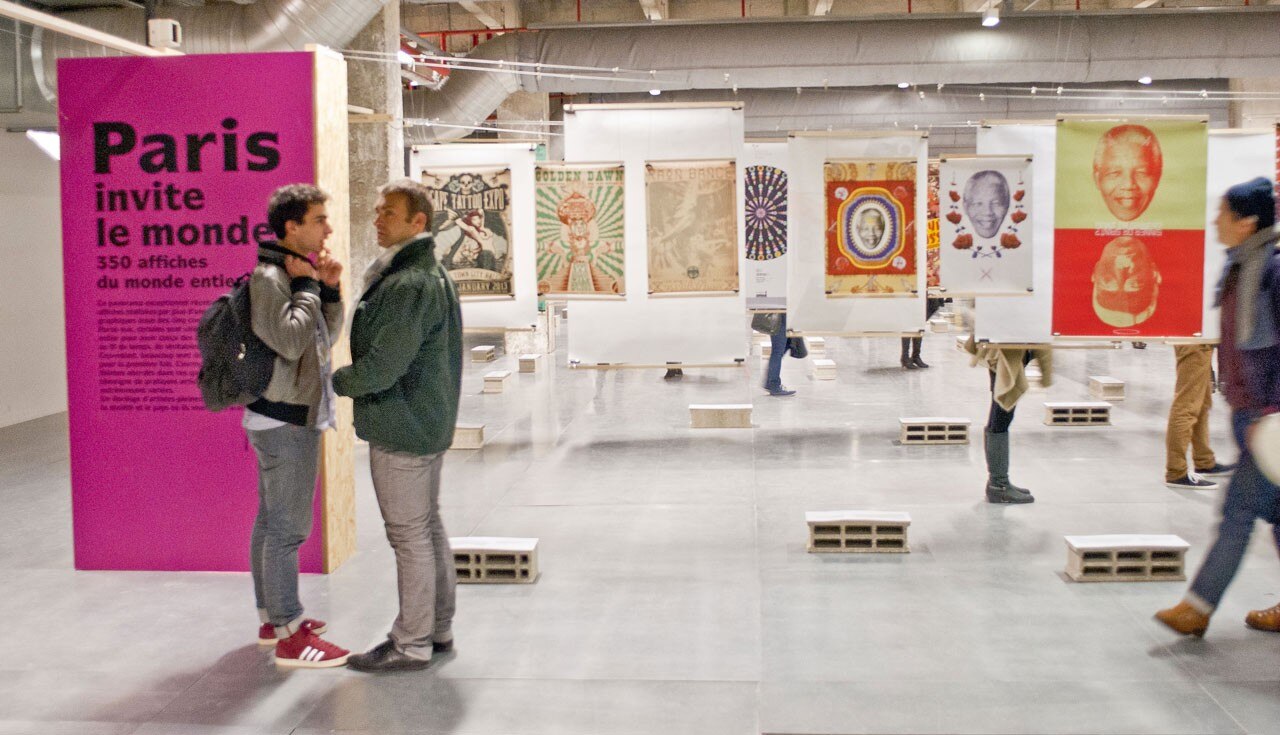
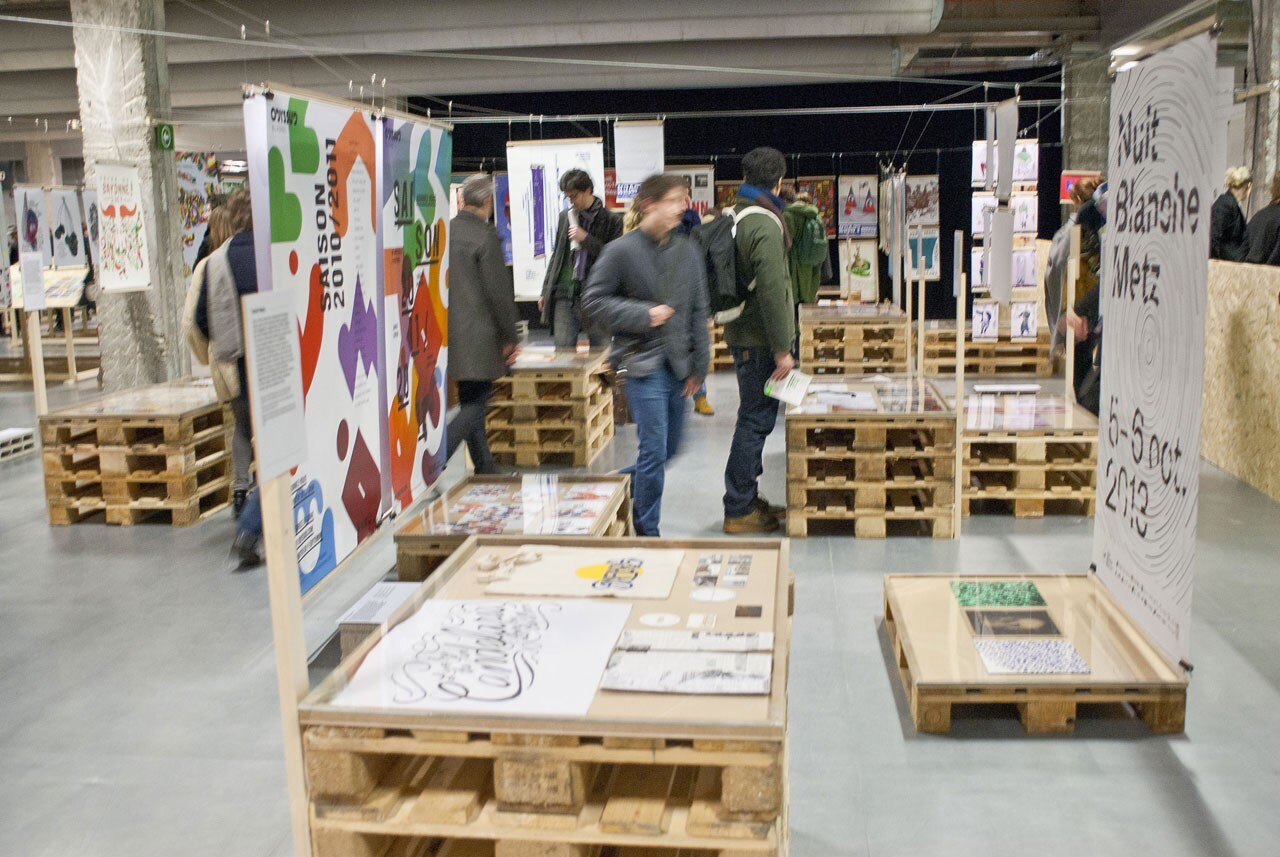
Finally, it is no coincidence that the Fête du Graphisme should be held in Paris, a city that adores beauty and – back in the late 1800s – witnessed the birth of the first advertising posters of the modern age, by Jules Chéret and Henri Toulouse-Lautrec.
Reinforcing this bond is a special section called “Celebrer Paris” and displaying 40 original creations by internationally acclaimed graphic artists who were asked to interpret the capital of France. The works are exhibited in the very heart of the capital, on the Champs-Élysées, posted at approximately 1600 points along a route through the most iconic Parisian districts.
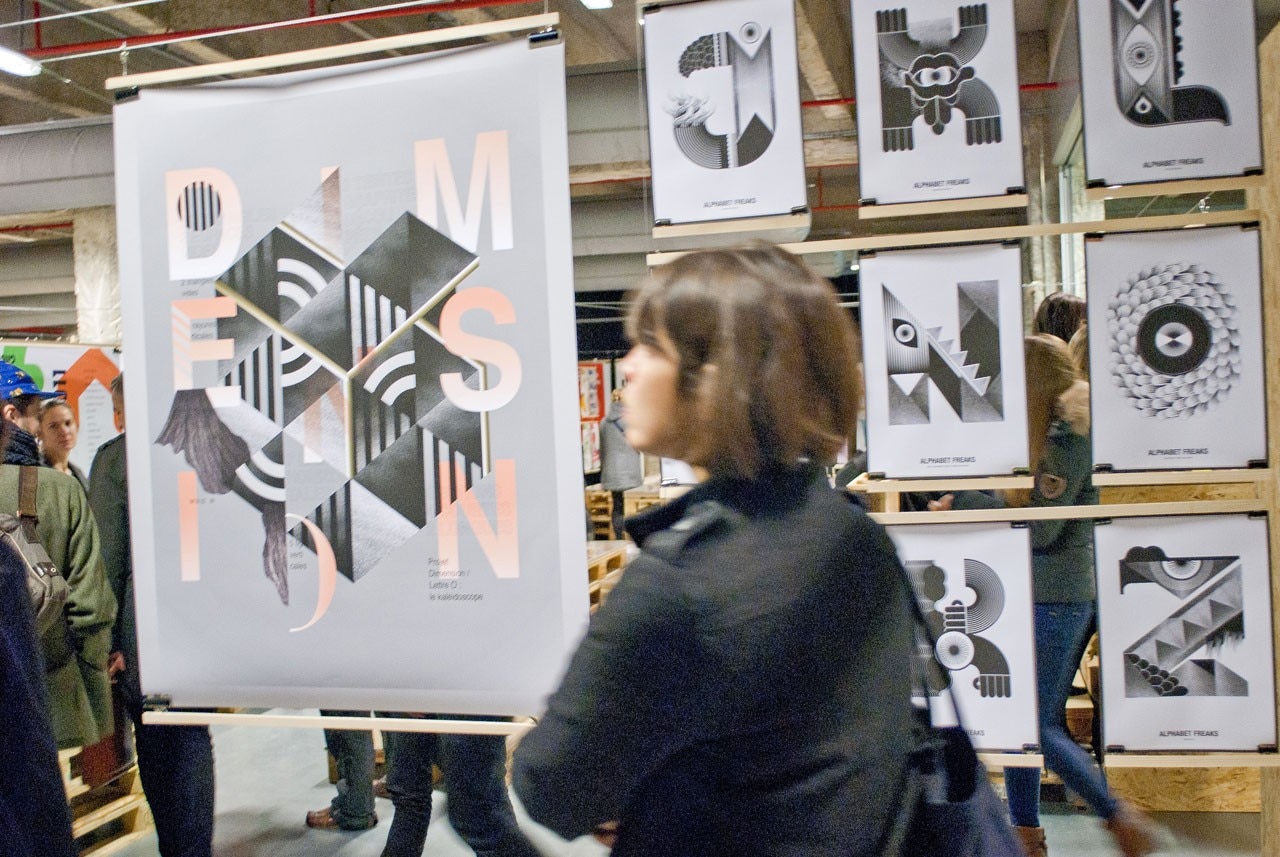
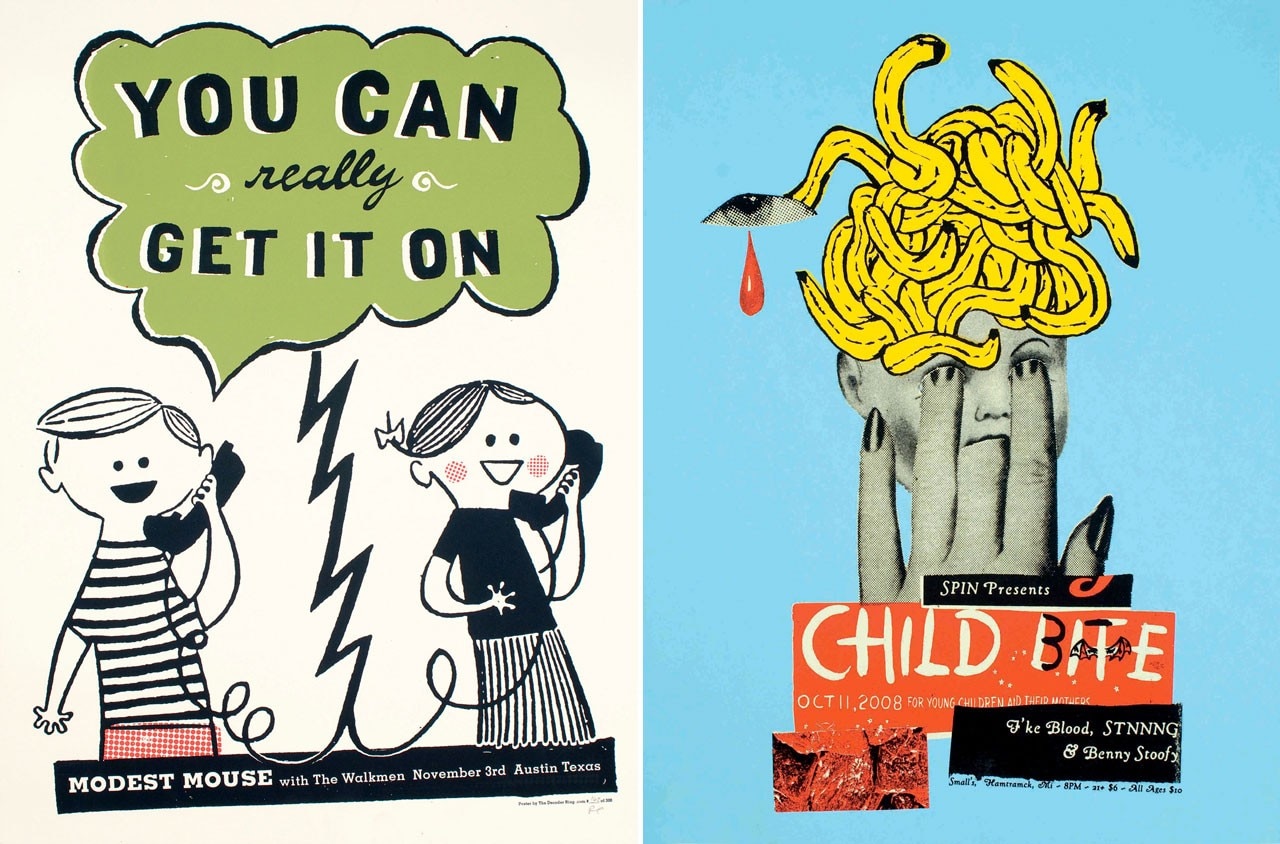
Until 18 February 2014
Fête du Graphisme
Paris, Various Locations
General commissioner: Michel Bouvet
General producer: Pierre Grand
General coordinator: Stephane Tanguy
Exhibition commissioner: Pauline Jankowiak, Yann Legendre, Azadeh Yousefi
Concept and realisation: ARTEVIA


